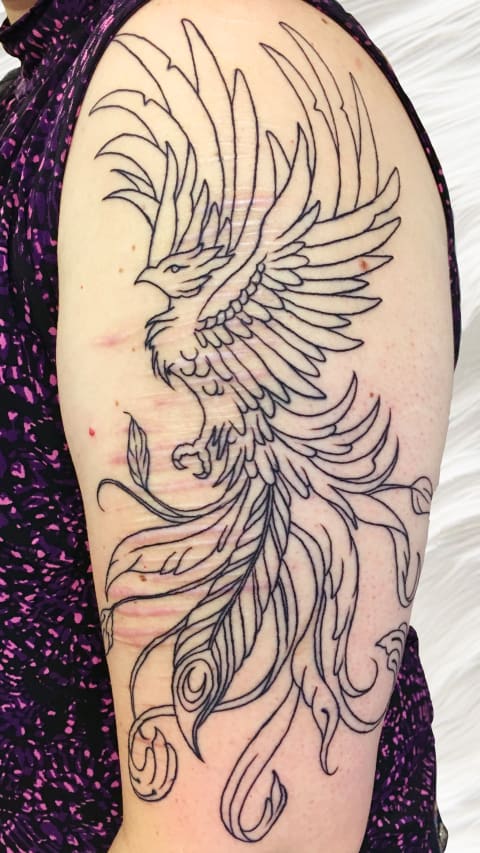Carroll wanted a tattoo to memorialize her friend, but she says the process has given her so much more. As she winced at the pain of the tattoo gun—yes, it almost always hurts—her internal wounds began to heal. “Getting out of your head and into your body is profound,” says Carroll, a poet and mother of two who lives in Sacramento, California. “Whenever you suffer through something physical and come out the other side, it helps you deal with emotional pain. And then you’re left with a permanent reminder to keep feeling.” And the benefits are more than skin-deep. There’s the placebo effect: Believe something will help, and it does. “Feelings of hope can reduce stress and create a positive outlook, which has been documented to help healing,” says Anna Friedman, a tattoo historian and the director of the Center for Tattoo History and Culture, a research organization. On the physical side, pain via tattoo needle sparks the release of endorphins. “Some people feel a type of high after getting tattooed,” she says. For artists like Sicklinger, playing a role in this process is a privilege. “I feel a connection to every single client, regardless of their reason for coming in,” she says. “As the client moves through physical pain and fear of commitment [to a permanent tattoo]—which is a powerful experience in itself—I take that journey with them.” The journey to feeling transformed by a tattoo can take years, sometimes forever. Carroll’s back tattoo—which has required five visits with Milic and 25 hours so far—isn’t finished. It’s an evolving process, much like its owner’s healing. “I don’t think I’ll know the whole impact this tattoo will have on me until it’s done,” Carroll says. “Right now it’s fragmented because I’m not all the way put back together either. But knowing that it’s there, I definitely feel better.”



